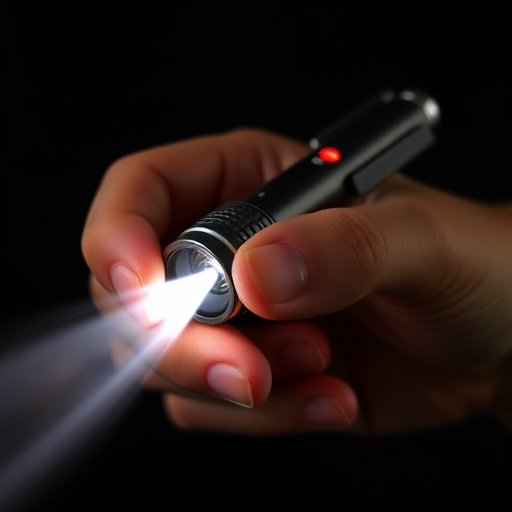The text explores the electric current's fundamental role in physics and engineering, focusing on its behavior within a pen stun gun. It highlights how activation creates an intricate electrical dance, with current flowing from the power source to electrode tips, delivering a shock. Understanding current spread patterns is crucial for both safety and innovation in pen stun gun design, enabling researchers to optimize performance while minimizing collateral damage and side effects. Advanced techniques like computer simulations and experimental testing aid in visualizing current flow, contributing to safer technologies, risk mitigation, and regulatory compliance for pen stun guns.
“Electrical current spread patterns hold intricate clues to understanding device functionality, especially in unique tools like the pen stun gun. This article delves into the fundamental aspects of electric current and its unpredictable behavior, shedding light on how a seemingly simple concept can have profound effects. Through a case study focusing on the pen stun gun, we explore the spread of electrical current within its design, revealing insights that are both fascinating and essential for engineers and enthusiasts alike. By analyzing these patterns, we unlock techniques to optimize device performance and gain new perspectives in electronics.”
- Understanding Electric Current and Its Behavior
- The Pen Stun Gun: A Case Study in Current Spread
- Analyzing the Pattern: Techniques and Implications
Understanding Electric Current and Its Behavior
Electric current, a fundamental concept in physics and engineering, is the flow of electrically charged particles, typically electrons, through a conductor. When a pen stun gun is activated, it creates an intricate dance of electrical energy. Understanding how this current spreads and interacts with different materials is crucial for both safety and innovation. The behavior of electric current depends on factors such as voltage, resistance, and the path it takes, shaping its trajectory and intensity.
In the context of a pen stun gun, the current flows from the device’s power source to the electrode tips, delivering an electrical shock. Analyzing this spread pattern reveals the underlying physics behind the weapon’s effectiveness. By studying how the current interacts with the human body, researchers can optimize the design for both impact and safety, ensuring the technology is used responsibly.
The Pen Stun Gun: A Case Study in Current Spread
The Pen Stun Gun offers a fascinating case study in electrical current spread patterns. Unlike traditional stun guns that rely on conductive materials and high-voltage discharge, pen stun guns utilize a unique design that delivers electric current through a small, handheld device. This compact weapon is designed to incapacitate assailants with a targeted jolt of electricity, making it crucial for personal defense.
By focusing the electrical charge into a narrow beam, pen stun guns ensure that the current spreads primarily along the path of least resistance, directly impacting the target area. This precise delivery mechanism minimizes collateral damage and side effects, distinguishing it from conventional stun devices. Understanding the spread pattern of electric current in such devices is essential for optimizing their design and enhancing user safety.
Analyzing the Pattern: Techniques and Implications
Analyzing the spread pattern of electrical current in a pen stun gun is crucial for understanding its effectiveness and safety. Techniques such as computer simulations, experimental testing, and advanced imaging methods allow researchers to visualize and study the precise path of current flow through different materials and structures within the device. This detailed analysis reveals critical insights into the weapon’s performance, including the intensity and distribution of shock waves, which can help optimize design for enhanced potency or modified safety features.
Implications of this analysis extend beyond mere design improvements. It also aids in developing safer stun gun technologies, mitigating risks to users and bystanders. Moreover, understanding current spread patterns can contribute to regulatory efforts, ensuring that pen stun guns meet established safety standards. This knowledge empowers both manufacturers and law enforcement to make informed decisions regarding the adoption and deployment of such devices.
Electrical current spread pattern analysis is a critical aspect of understanding how energy flows through various mediums, especially in extreme scenarios like the pen stun gun. By studying the behavior of electric current, we gain valuable insights into the design and safety implications of such devices. This analysis allows for the development of more efficient and less harmful technologies, ensuring user safety while maintaining effectiveness. The techniques outlined here provide a robust framework for navigating the intricate patterns of current spread, particularly in compact tools like pen stun guns.
